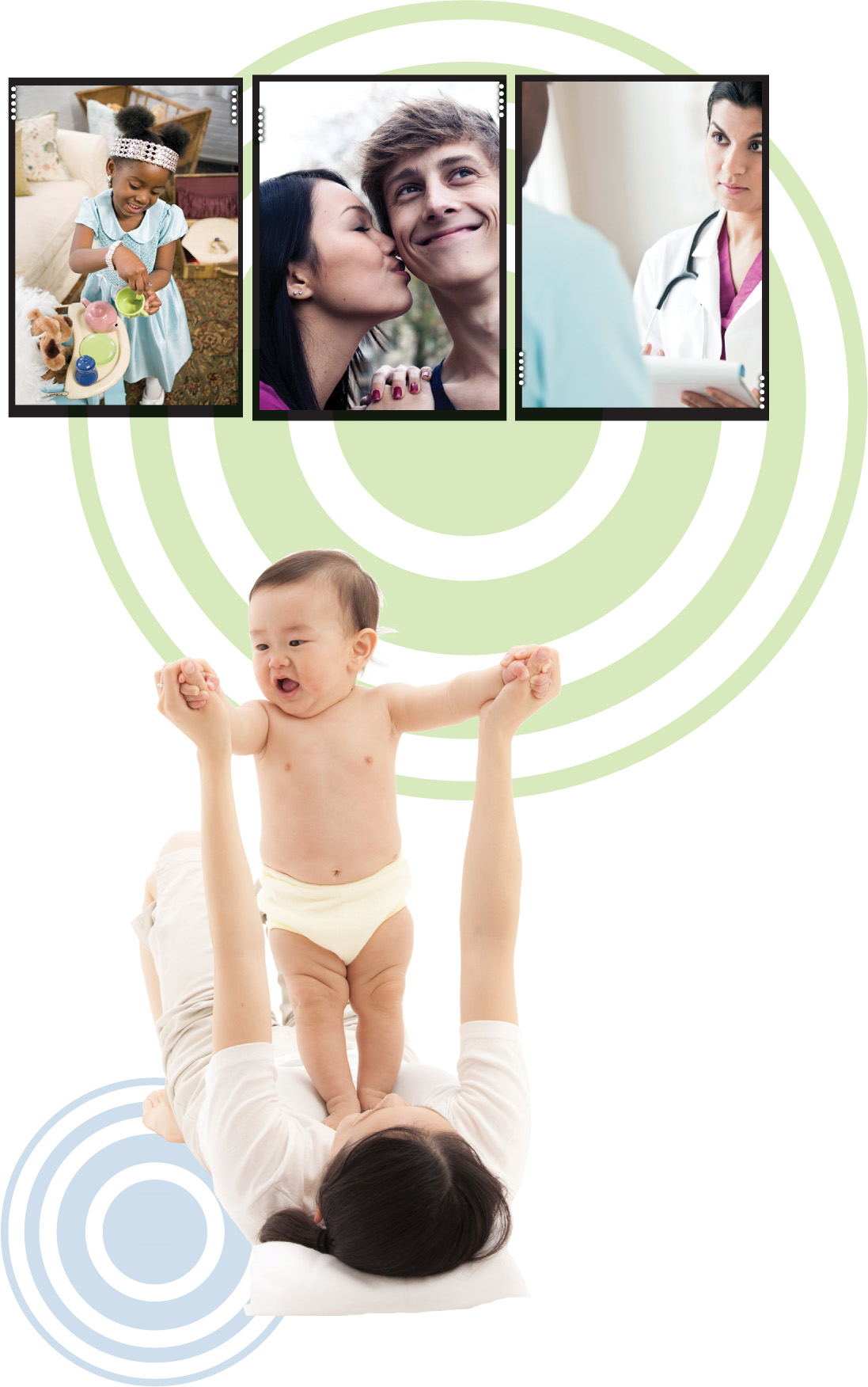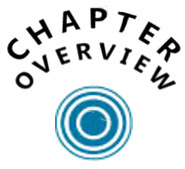66


Prenatal Development and the Newborn- Conception
- Prenatal Development
- CLOSE-UP: Twin and Adoption Studies
- The Competent Newborn

Infancy and Childhood- Physical Development
- Cognitive Development
- Social Development
- Thinking About Nature and Nurture

Adolescence- Physical Development
- Cognitive Development
- Social Development
- THINKING CRITICALLY ABOUT:
How Much Credit or Blame Do Parents Deserve? - Emerging Adulthood
- Thinking About Continuity and Stages

Adulthood- Physical Development
- Cognitive Development
- Social Development
- Thinking About Stability and Change
| 3 | Developing Through the Life Span |

|
67

Life is a journey, from womb to tomb. So it is for me, and so it will be for you. My story, and yours, began when a man and a woman contributed 20,000+ genes to an egg that became a unique person. Those genes contained the codes for the building blocks that, with astonishing precision, formed our bodies and predisposed our traits. My grandmother gave to my mother a rare hearing-loss pattern, which she, in turn, passed on to me (the least of her gifts). My father was a good-natured extravert, and sometimes I forget to stop talking. As a child, my talking was slowed by painful stuttering, for which Seattle Public Schools gave me speech therapy.

Along with my parents’ nature, I also received their nurture. Like you, I was born into a particular family and culture, with its own way of viewing the world. My values have been shaped by a family culture filled with talking and laughter, by a religious culture that speaks of love and justice, and by an academic culture that encourages critical thinking (asking, What do you mean? How do you know?).
We are formed by our genes, and by our contexts, so our stories will differ. But in many ways we are each like nearly everyone else on Earth. Being human, you and I have a need to belong. My mental video library, which began after age 4, is filled with scenes of social attachment. Over time, my attachments to parents loosened as peer friendships grew. After lacking confidence to date in high school, I fell in love with a college classmate and married at age 20. Natural selection disposes us to survive and pass on our genes. Sure enough, two years later a child entered our lives and I experienced a new form of love that surprised me with its intensity.
But life is marked by change. That child now lives 2000 miles away, and one of his two siblings calls South Africa her home. The tight rubber bands linking parent and child have loosened, as yours likely have as well.
Change marks most vocational lives as well. I spent my teen years working in the family insurance agency, then became a premed chemistry major and a hospital aide. After discarding my half-completed medical school applications, I found my calling as a psychology professor and author. I predict that in 10 years you, too, will be doing things not in your current plan.
Stability also marks our development. When I look in the mirror I do not see the person I once was, but I feel like the person I have always been. I am the same person who, as a late teen, played basketball and discovered love. A half-century later, I still play basketball. And I still love—with less passion but more security—the life partner with whom I have shared life’s griefs and joys.
68
We experience a continuous self, but that self morphs through stages—typically growing up, raising children, enjoying a career, and, eventually, life’s final stage, which will demand my presence. As I make my way through this cycle of life to death, I am mindful that life’s journey is a continuing process of development. That process is seeded by nature and shaped by nurture, animated by love and focused by work, begun with wide-eyed curiosity and completed, for those blessed to live to a good old age, with peace and never-ending hope.
. . .
Across the life span, we grow from newborn to toddler to teen to mature adult. At each stage of life’s journey there are physical, cognitive, and social milestones. Let’s begin at the very beginning.
3-1 What are the three major issues studied by developmental psychologists?
Developmental psychology examines our physical, cognitive, and social development across the life span, with a focus on three major issues:
- Nature and nurture: How does our genetic inheritance (our nature) interact with our experiences (our nurture) to influence our development?
- Continuity and stages: What parts of development are gradual and continuous, like riding an escalator? What parts change abruptly in separate stages, like climbing rungs on a ladder?
- Stability and change: Which of our traits persist through life? What changes as we age?
You will read about these issues throughout this chapter. At the end of our infancy and childhood discussion, we will focus on nature and nurture. At the end of our adolescence discussion, we will focus on continuity and stages. At the end of our adulthood discussion, we will focus on stability and change.